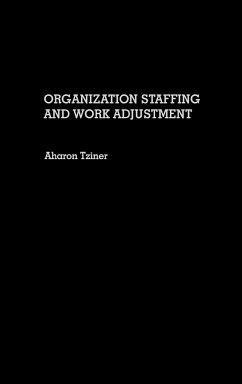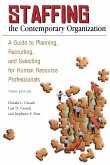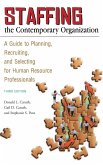This volume explores the concepts, themes, methods, and procedures of organization staffing. As author Aharon Tziner notes at the outset, although organizations usually attempt to predict the likely future performance of each applicant in terms of productivity, rarely do they consider the likelihood of the applicants finding gratification in their work-related needs and aspirations. Organizations which fail to consider these needs in the initial hiring process run the risk that extremely talented staff may eventually abandon the organization because of a lack of personal fulfillment. The short--and long-term consequences of these erroneous staffing policies range from decreased staff morale and efficiency to seriously impaired profitability. Tziner here offers a functional and integrated conceptual framework that enables organizations to maximize the probability that staffing decisions will result in optimal work adjustment and the enhancement of organizational productivity. Tziner begins with an overview of the theoretical foundations of organizational staffing and a discussion of some basic concepts in the field. Subsequent chapters examine the process and methods of job analysis, predictors and measuring tools, and the staffing process. A separate chapter on staffing methods and instruments covers biodata, reference checks, the interview, psychological tests, graphological tests, situational tests, assessment centers, and peer evaluation. The following group of chapters address the cost of personnel programs, performance appraisal systems, work adjustment, and work-related attitudes. In the final chapter, Tziner shows the reader how to recognize the symptoms of work maladjustment. Numerous figures and tables illustrate points made in the text. Four appendices include additional helpful information such as guidelines for a structured interview and examples of performance appraisal rating formats. Industrial and organizational psychologists as well as human resources professionals will find Tziner's work an enlightening and practical guide to a long-overlooked aspect of the organization staffing process.
Hinweis: Dieser Artikel kann nur an eine deutsche Lieferadresse ausgeliefert werden.
Hinweis: Dieser Artikel kann nur an eine deutsche Lieferadresse ausgeliefert werden.








